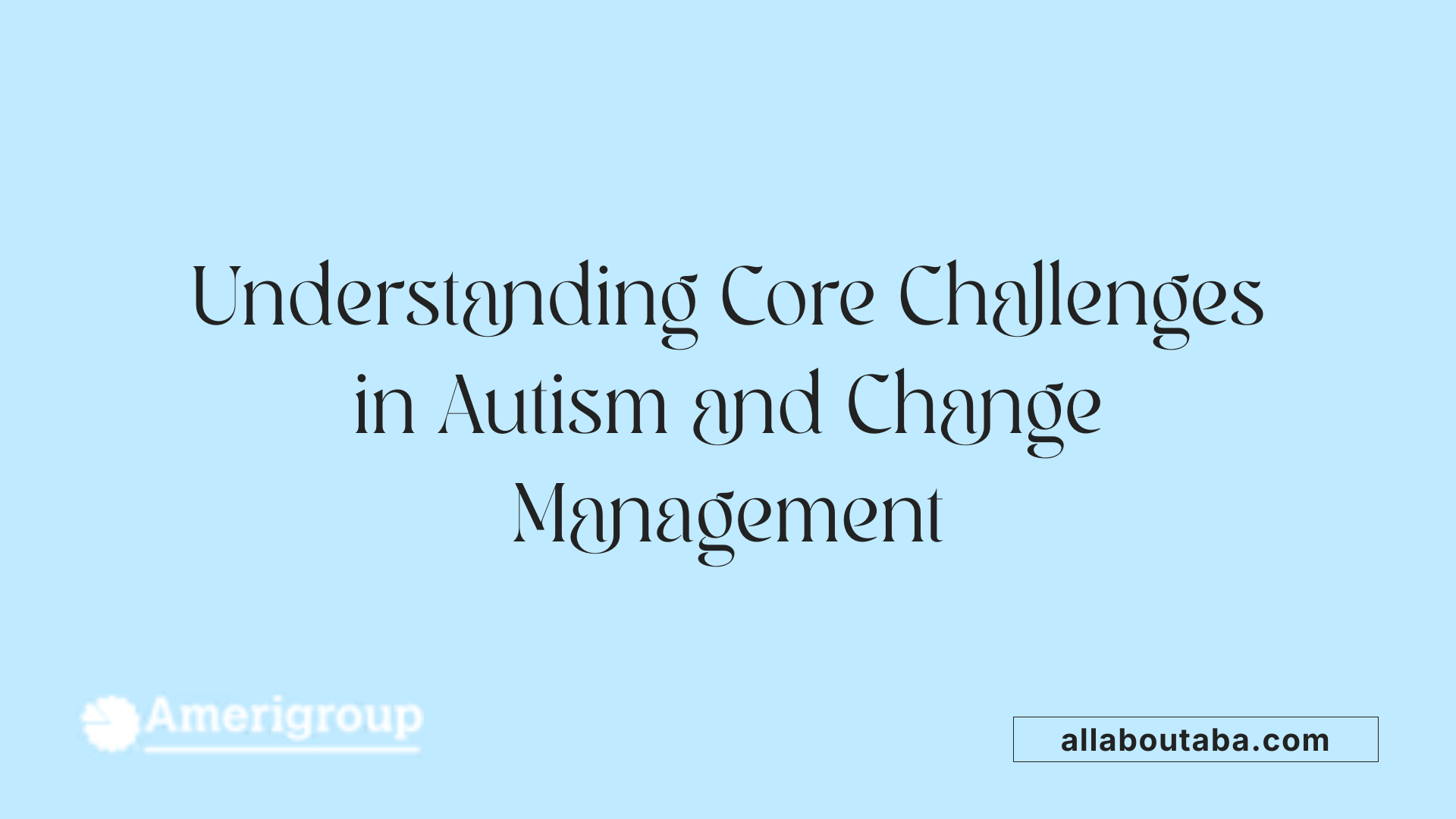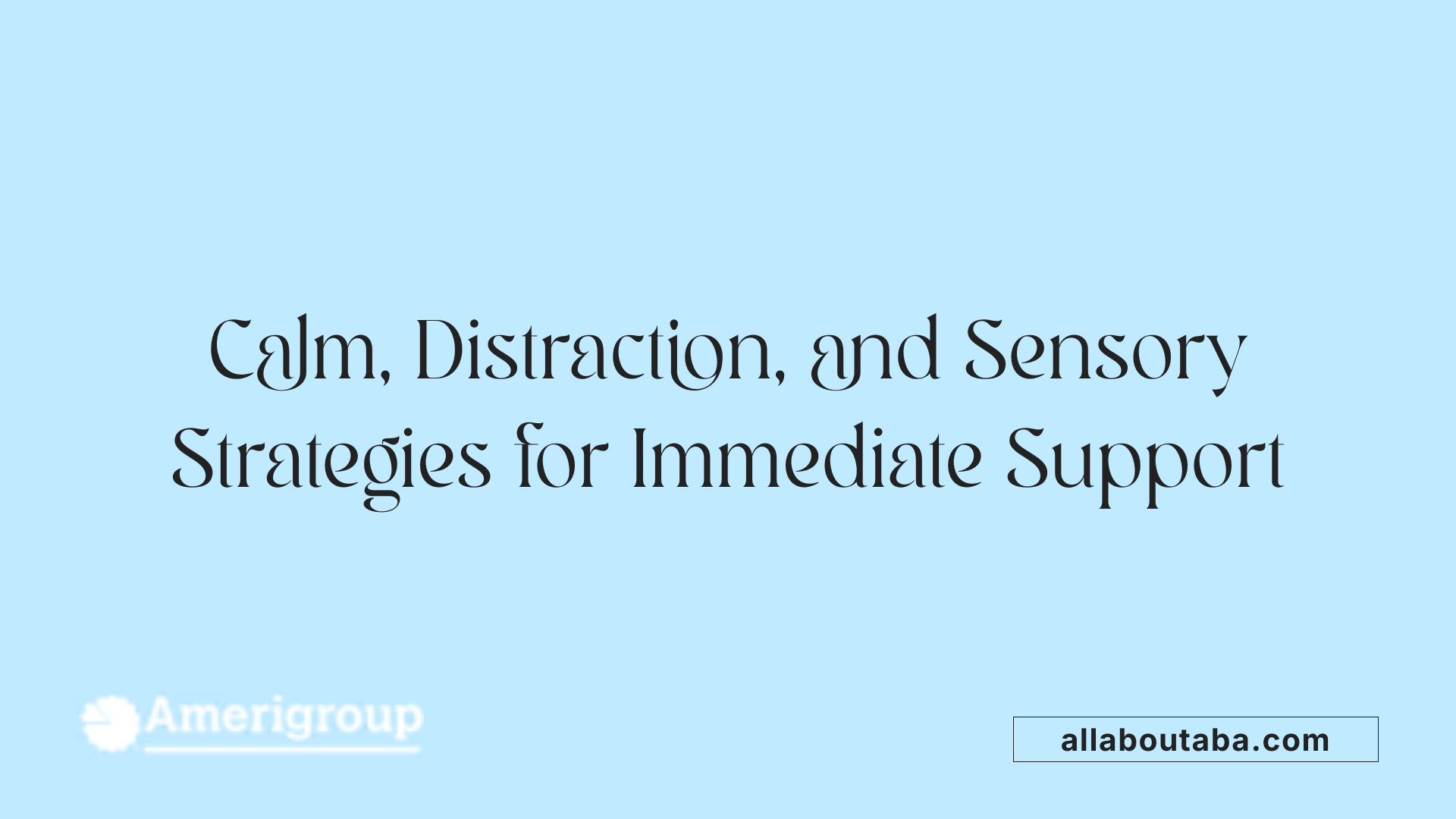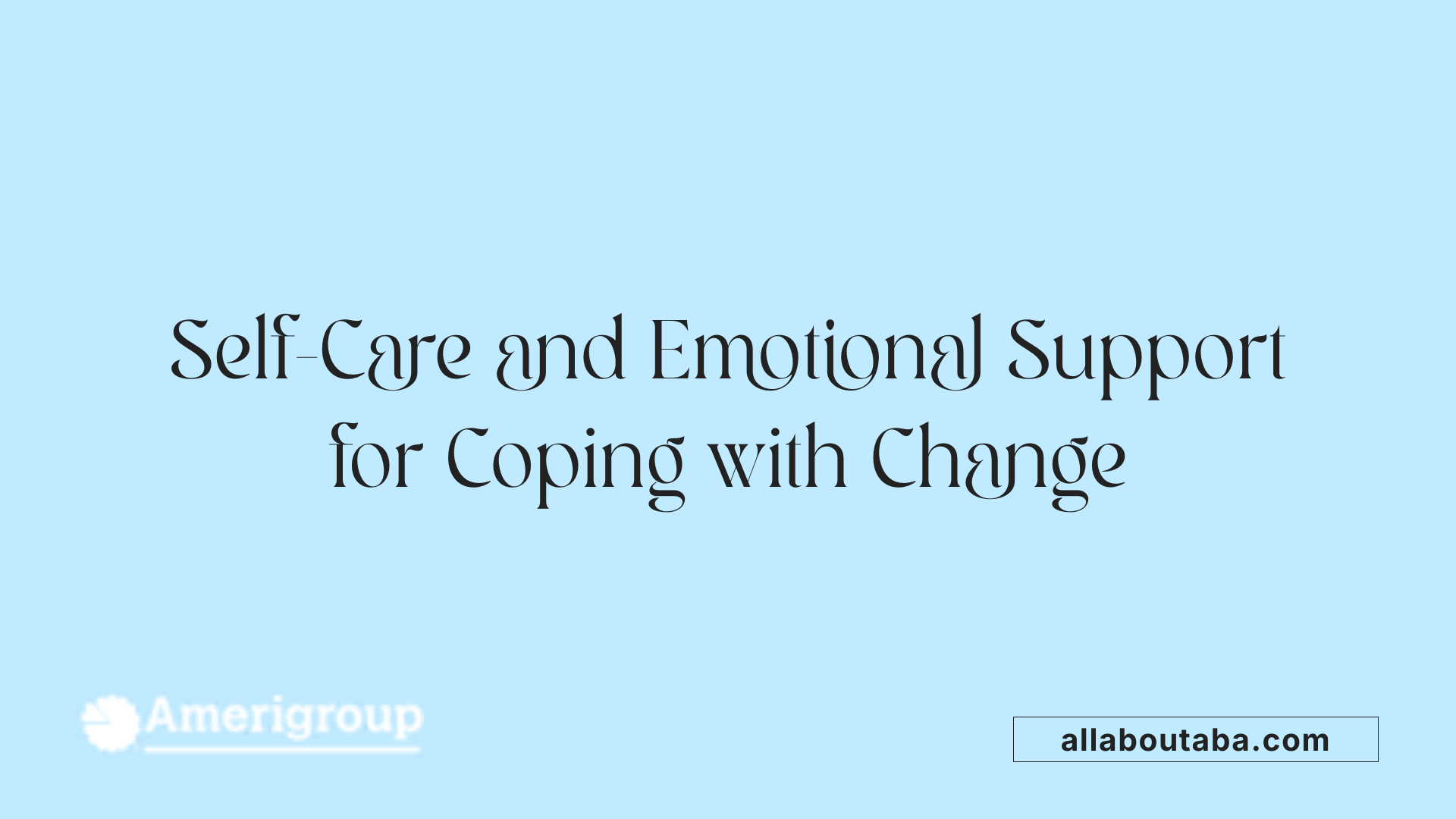Autism And Strategies For Managing Unexpected Changes
Understanding the Impact of Change on Autistic People
Unpredictable changes can be particularly challenging for individuals with autism, who often rely on routines and predictability for comfort and security. These disruptions can evoke heightened anxiety, behavioral reactions, and emotional distress. This article explores effective strategies and insights to support autistic individuals in managing unexpected changes, emphasizing proactive planning, visual supports, coping mechanisms, and tailored interventions.
The Nature of Challenges Faced by Autistic Individuals During Unexpected Changes
How does autism affect reactions to unexpected changes?
Children and adults with autism often thrive on routine and consistency. They find comfort in knowing what comes next and may experience significant stress and anxiety when faced with unexpected changes. Such disruptions can interrupt their sense of order, leading to intense reactions.
Common responses include withdrawal, repetitive behaviors (also known as stimming), tantrums, aggression, or self-injury. These behaviors are often signals of underlying distress, frustration, or difficulty in communicating feelings. Because autistic individuals may struggle to express their emotions verbally, these actions serve as their way to cope.
Triggers for challenging reactions can include sensory overload, such as loud noises or bright lights, disruptions in daily routines, or medical issues like illness. Additionally, changes in environment, plans, or social interactions can be overwhelming.
To support individuals during unexpected changes, strategies like visual schedules, social stories, and advance preparations are helpful. Providing extra processing time allows them to mentally adapt. Calm and understanding responses from caregivers help reduce anxiety. Incorporating sensory tools like fidget toys and calming music can also ease stress.
By maintaining a predictable, structured environment and validating their feelings, caregivers can greatly lessen the emotional impact of surprises. Recognizing the unique ways each autistic person reacts to change is crucial for effective support and easing transitions.
Understanding Why Unexpected Changes Are Difficult for Autistic People

Reliance on routines and order
Autistic individuals often prefer structured routines and clear order because these provide a sense of security and predictability. Knowing what will happen next helps reduce anxiety and facilitates self-regulation. When routines are disrupted unexpectedly, they can feel overwhelmed and distressed, leading to behaviors such as withdrawal, meltdowns, or aggression.
Sensory processing difficulties and over- or under-stimulation
Many autistic people experience sensory sensitivities, making them highly reactive to environmental changes. Some may become overwhelmed by loud sounds, bright lights, or unexpected sensory inputs, which can heighten anxiety. Conversely, under-stimulation may also cause discomfort and lead to repetitive behaviors or withdrawal. These sensory challenges make adapting to unpredictable situations even more difficult.
Challenges with executive functioning and adapting to new circumstances
Executive functioning skills, including planning, flexibility, and self-control, are often areas of difficulty for autistic individuals. This can impede their ability to adjust swiftly to new or unexpected scenarios. When faced with sudden changes, they may struggle with decision-making, problem-solving, or shifting attention, which heightens stress levels.
Educational insights into the challenges autistic individuals face with unexpected changes and how to address them
Understanding the core reasons behind these difficulties can guide caregivers and educators. Consistent use of visual supports such as schedules, countdown calendars, and social stories can prepare the individual for upcoming changes. Introducing changes gradually and offering opportunities for practice in a safe environment helps build resilience.
Incorporating positive reinforcement when they successfully cope with change encourages adaptive behaviors. Establishing calming routines and providing sensory tools like fidget toys or listening to soothing music can help manage sensory overload during transitions.
Partnering with professionals such as behavior analysts and psychologists allows for tailored strategies that address specific challenges. These experts can help develop interventions emphasizing predictability, choice, and sensory regulation, fostering greater independence and emotional well-being.
By creating a supportive environment that respects their needs and provides advance notice, caregivers can reduce the stress associated with unpredictability. This approach helps autistic individuals develop adaptive coping skills, making future changes less daunting and more manageable.
Proactive Planning and Preparation Techniques

What strategies can help manage routine disruptions in children with autism?
Managing unexpected changes can be challenging for children with autism, who often thrive on predictability and routine. To support them effectively, caregivers and educators can use a variety of proactive strategies.
One of the most effective methods involves preparing the child ahead of time with visual supports. Visual schedules, social stories, and countdown timers are valuable tools that help children understand and anticipate upcoming changes. For example, a visual schedule might outline the day's activities, while a countdown timer can signal how much time remains before a transition or event.
Introducing changes gradually helps build comfort and adaptability. This includes involving the child in planning when possible, allowing them to feel more in control of the situation. Explaining changes clearly and using consistent language can also ease anxiety.
Advance notices are crucial. Giving the child sufficient warning about upcoming events or alterations helps reduce resistance and stress. Clear communication, possibly supplemented by pictures or videos explaining what to expect, reinforces understanding.
Other strategies include maintaining a flexible routine—sticking to familiar patterns but allowing for minor variations—and offering choices that empower the child, such as selecting between two activities.
During transitions, calming techniques like sensory toys, deep breathing exercises, or music can be useful. These tools help children self-regulate and stay calm.
Collaborating with professionals like therapists and educators can tailor plans to the child's needs. They can assist in teaching coping skills and developing personalized visual supports.
In summary, a combination of visual aids, gradual change introduction, advance notice, clear communication, supportive routines, and calming strategies creates a supportive environment. These measures help children with autism navigate routine disruptions with reduced stress and greater confidence.
Visual Supports and Social Stories as Tools for Transition Management

How can we help autistic individuals adapt to changes in daily routines or environments?
Autistic individuals often prefer routine and predictability, making changes in daily routines or environments particularly challenging for them. To support smoother transitions, it is essential to provide visual supports and structured cues that clearly communicate upcoming changes. Visual aids such as pictures, schedules, and transition boards serve as powerful tools to help children understand what to expect, reducing uncertainty and anxiety.
Creating daily visual schedules that outline routines with familiar images allows children to anticipate each part of their day. Calendars and countdowns can prepare children for upcoming events, giving them time to process the change and mentally prepare. Using picture cards to manage activities and explaining routines visually can promote flexibility.
Social stories are personalized narratives that describe specific situations, such as visiting a new place or dealing with unexpected changes. They help children understand what will happen next and how to navigate new experiences comfortably.
Gradually introducing small changes alongside positive reinforcement helps children develop resilience and adaptability. It is also beneficial to involve the child in planning and decision-making, giving them a sense of control.
Incorporating sensory tools like calming toys or music, and providing extra time during transitions, can also ease stress. Practicing visits to new locations beforehand, or creating videos explaining upcoming routines, further supports predictability.
A tailored combination of visual supports, gradual exposure, and sensory strategies encourages more positive responses to change. Over time, these methods help build flexibility, reduce anxiety, and foster coping skills.
| Strategy | Description | Additional Benefits |
|---|---|---|
| Visual schedules | Use pictures and symbols to outline daily routines | Decreases uncertainty, improves understanding |
| Calendars/countdowns | Visual markers for upcoming events | Prepares child mentally for change |
| Social stories | Personalized narratives about situations | Builds comprehension and reduces anxiety |
| Visual transition cues | Visual aids indicating change moments | Facilitates smoother shifts |
| Sensory tools | Calming objects or music | Manages sensory overload |
| Gradual adjustments | Introduce changes step-by-step | Fosters resilience |
Supporting each individual's needs with consistent, visual, and gradual approaches enhances their ability to adapt to life's inevitable changes, making daily life more manageable and less stressful.
Effective Strategies During Unexpected Changes

How can a calm and soothing environment, distraction, and sensory tools support autistic children?
Creating a calm environment is essential when unexpected changes occur. A peaceful setting, with dim lighting and minimal noise, can help reduce sensory overload and anxiety. Distraction techniques, such as engaging in preferred activities or using sensory toys like fidget tools and calming music, can redirect focus away from distressing changes.
Sensory tools serve as effective coping mechanisms by providing sensory input that calms the nervous system. Items like textured toys, weighted blankets, or noise-canceling headphones can help children self-soothe and regain composure.
Why is giving extra time and space important for processing change?
Autistic individuals often need additional time to process unexpected events or changes. Rushing them can increase stress and trigger behaviors like meltdowns or withdrawal. Providing extra time allows their brains to understand, accept, and adapt to the new situation.
Creating a safe space where they can pause and reflect helps them manage emotions and regain control. This approach fosters resilience and can reduce long-term anxiety linked to unpredictability.
How can calm communication and validation of feelings help during transitions?
Clear, gentle communication is vital in reassuring autistic children during transitions or surprises. Using simple language, visual supports, or social stories can explain what is happening in a predictable way.
Validating their feelings—acknowledging their distress, discomfort, or frustration—helps them feel understood and supported. Phrases like
Supporting Emotional Well-Being and Self-Care Strategies

What self-care techniques are effective for managing change-related stress?
Managing stress caused by unexpected changes is vital for individuals with autism. Self-care strategies play a crucial role in helping them cope effectively. One of the most helpful approaches includes calming techniques such as mindfulness exercises and deep breathing. These practices help in reducing immediate feelings of anxiety and promote a sense of calm.
Pausing before reacting to a change allows individuals to process their emotions calmly instead of reacting impulsively. This moment of reflection can prevent escalation into distress or difficult behaviors.
Maintaining familiar routines and engaging in relaxation-promoting activities are essential components of self-care. Journaling can serve as an outlet for expressing feelings and processing emotions. Spending time in nature or participating in calming activities like listening to soothing music or using sensory toys can also foster emotional balance.
Challenging and reframing negative thoughts about change support healthier perspectives. For example, viewing change as an opportunity for new experiences can reduce resistance and anxiety.
Seeking support from caregivers, therapists, or mental health professionals is helpful when managing stress. They can provide tailored strategies and encouragement.
Utilizing healthy coping mechanisms, such as sensory tools or engaging in hobbies, enhances resilience during challenging times. Importantly, accepting that change is a natural part of life and allowing oneself sufficient time to adjust are critical aspects of self-care.
These strategies, combined, help individuals with autism navigate shifts in their routine more smoothly and maintain their emotional well-being amidst unpredictability.
Behavior Management and Support Strategies for Caregivers
How can caregivers help manage behavioral changes in autistic children during unexpected events?
Managing behaviors in children with autism during unforeseen circumstances can be challenging. Still, implementing structured approaches creates a sense of security and predictability that can significantly reduce stress.
Creating a consistent and supportive environment is foundational. Strategies such as Positive Behavior Support (PBS) focus on reinforcing positive behaviors while addressing challenging ones. Visual schedules, like picture cards and daily routines, help children understand what to expect, reducing anxiety associated with surprises.
Sensory breaks are another useful tool. These allow children to self-regulate by engaging in calming activities, using tools like sensory toys, fidget items, or listening to calming music. These interventions ease overstimulation, helping children stay calm during unexpected changes.
Parents and caregivers play a vital role by being trained in recognizing triggers and responding appropriately. It’s important to understand that behaviors often mirror frustration or difficulty in expressing needs. Reinforcing positive behaviors through praise, maintaining consistency in routines, and involving children in decisions when possible can minimize distress.
During unexpected events, caregivers should provide a calm, reassuring presence. Explaining changes in simple terms helps children make sense of the situation. Using visual supports such as schedules or social stories can prepare children ahead of time.
Involving children in coping strategies—like deep breathing exercises or the use of calming tools—fosters independence and resilience. Tailoring these approaches to each child's preferences and needs ensures the support is effective.
Overall, a combination of predictability, visual aids, sensory regulation, and calm, supportive communication helps children navigate behavioral shifts during unpredictable events more comfortably. Training caregivers in these techniques is crucial for creating a nurturing environment that promotes positive behaviors and reduces the impact of stress.
Building Flexibility and Resilience Over Time
What methods help develop flexibility and adaptability in autistic individuals?
Developing flexibility and resilience in autistic people requires thoughtful strategies that build confidence and reduce distress during change. One effective approach is gradual exposure to new or unpredictable situations.
Starting with small, manageable changes allows autistic individuals to experience flexibility in a controlled way. For example, altering routines slightly and providing ample preparation can help them become accustomed to adjustments.
Supporting these transitions with visual supports, like visual schedules or timers, makes the change less intimidating and easier to understand. This step-by-step method helps reduce anxiety and promotes adaptability.
Reinforcing positive coping skills is essential. When a child or adult successfully manages a change, praise and rewards reinforce their efforts, encouraging them to continue developing these skills.
Practicing calming techniques such as deep breathing, using sensory tools, or engaging in preferred activities can make transitions smoother. Creating safe environments where individuals can practice these responses helps build confidence.
Patience and understanding from caregivers are crucial components. Allowing extra processing time during those times helps prevent overwhelm and frustration.
Consistent support and encouragement gradually help autistic individuals accept change. Over time, these strategies support the development of resilience, enabling them to face different life transitions with greater ease and less distress.
| Method | Description | Additional Details |
|---|---|---|
| Gradual exposure | Introducing small changes slowly over time | Builds comfort with unpredictability |
| Positive reinforcement | Reward for coping successfully | Encourages repetition of adaptive behaviors |
| Visual supports | Use of schedules, timers, picture cards | Aids understanding and predictability |
| Calming techniques | Deep breathing, sensory tools, relaxation activities | Helps manage stress during transitions |
| Patience and time | Allow extra processing time during change | Reduces overwhelm and promotes positive adaptation |
Understanding and practicing these approaches can turn routine challenges into opportunities for growth. Over time, they help autistic individuals develop a greater sense of control and confidence in navigating life's changes.
Supporting Autistic Individuals in Embracing Change
Managing unexpected changes in life requires a comprehensive understanding of the challenges faced by autistic individuals and the proactive implementation of tailored strategies. Utilizing visual supports, establishing routines, involving the individual in planning, and fostering calming techniques are essential to reduce stress and promote adaptive responses. Importantly, patience and consistency from caregivers, along with professional guidance when needed, can significantly improve resilience and emotional well-being. Embracing change as a natural part of life and building flexibility over time enables autistic individuals to navigate the world with greater confidence, independence, and joy.
References
- Autism and Dealing with Change
- Preference for order, predictability or routine
- Autism: Sudden Changes and How to Manage Them
- Autism: Strategies for coping with change and uncertainty
- Processing Time is Key to Coping with Unexpected Change
- Behavior Changes with Autism
- Adapting to Change: 10 Tips For Autism Parents
- Autism Routine Disruption Coping Strategies
- Autism in the classroom: Strategies for success
- Autism and Dealing with Change
Other articles
Recent articles

Best Practices For Autism-Friendly Fitness And Recreation Centers

Best Ways To Promote Healthy Social Media Use For Autistic Teens

How To Help Autistic Children Cope With Public Speaking

Autism And Strategies For Managing Unexpected Changes

Best Podcasts About Autism For Parents And Educators

Autism And The Impact Of Seasonal Changes On Behavior

The Role Of Diet In Managing Co-Occurring Conditions With Autism

Sleep Challenges In Autism And Practical Solutions

Best Ways To Build Daily Routines For Autistic Children

Best Practices For Supporting Autistic Entrepreneurs

Autism And Strategies For Navigating Large Social Gatherings

Adaptive Sports And Recreational Activities For People With Autism

Autism And The Benefits Of Story-Based Learning Activities

Understanding The Role Of Play In Autism Development

Autism And The Impact Of Environmental Noise On Learning

How To Create Autism-Friendly Community Spaces

Autism And Chronic Health Conditions: What To Know

The Role Of Care Managers In Autism Life Planning

How To Teach Social Boundaries To Autistic Children

How Autistic Individuals Experience Empathy Differently

How To Support Autistic Employees In Remote Work Settings

Autism And The Relationship Between Motor Skills And Learning

How To Create Community Resource Guides For Autism Families

How To Teach Daily Living Skills To Autistic Teens

Autism And The Impact Of Mind-Body Practices On Stress Reduction

Autism And The Benefits Of Outdoor Group Activities

How To Create Autism-Friendly Sensory Paths In Schools

Best Practices For Autism-Friendly Park And Recreation Areas

Autism And Strategies For Reducing School Refusal

Supporting Autistic Individuals In Public Speaking

The Role Of Diet In Managing Autism Symptoms

The Benefits Of Gardening Clubs For Autism Social Development

How To Prepare Autistic Children For Dental Visits

Autism And Employment: Career Paths That Work

Best Practices For Autism-Friendly Hotels And Lodging

The Impact Of Screen Time On Autism Development

Autism Screening Tools For Early Childhood

The Role Of Physical Exercise In Autism Therapy

Best Strategies For Supporting Autistic College Students

The Role Of Technology In Autism Early Detection

Sensory-Friendly Classroom Design Ideas For Autistic Students

The Role Of Speech Therapy In Building Social Communication Skills

Best Strategies For Handling Autistic Burnout In Adults

Autism And The Importance Of Predictability In Routine

Autism And Peer Education: Teaching Acceptance In Schools

Best Practices For Sensory-Friendly Libraries And Reading Rooms

Self-Advocacy Skills For Autistic Adults

The Role Of Technology In Autism Peer Communication

Promoting Physical Activity In Children With Autism

How To Prepare Autistic Children For Medical Procedures

The Role Of Social Media In Autism Advocacy And Awareness

The Impact Of Sensory Rooms In Public Facilities For Autism

How To Create An Autism-Friendly Holiday Celebration

Best Practices For Inclusive Education For Autistic Students

Autism And Mental Health: Recognizing Signs Of Distress

Best Practices For Sensory-Friendly Waiting Rooms

The Role Of Teachers In Early Autism Red Flag Identification

Autism-Friendly Housing Design Features

Autism-Friendly Housing Design Features

How Environmental Modifications Improve Autism Outcomes

Autism And Technology-Based Learning Tools

Supporting Autistic Children Through Changes In Routine

The Link Between Autism And Working Memory Challenges

Best Practices For Autism-Friendly Cooking Classes

Autism And The Benefits Of Structured Music Lessons

Best Books To Teach Kids About Autism Acceptance

Sensory Diets And Their Benefits For Autism Management

How To Prepare Autistic Teens For Driver’s Education

How To Teach Autistic Teens About Healthy Relationships

The Role Of Visual Prompts In Building Daily Habits For Autism

Addressing Sleep Regression In Children With Autism

Understanding Social Stories And How They Help Autistic Children

Navigating Insurance Coverage For Autism Therapy Services

How To Prepare Autistic Adults For Independent Travel

Supporting Autistic Individuals In Volunteer Work

How Mindfulness Practices Can Support Autism Well-Being

Understanding Hyperfocus And Special Interests In Autism

Understanding Stimming As A Self-Regulation Tool

Sensory-Based Interventions For Autism At Home

Best Ways To Introduce Self-Advocacy In Autistic Teens

Best Ways To Support Autistic Employees In Customer Service Roles

Best Practices For Autism-Friendly Volunteer Programs

Autism And The Benefits Of Sensory Play For Emotional Growth

Autism And Strategies For Building Peer Relationships

Understanding How Autism Affects Memory Processing

Autism And Strategies For Building Coping Skills In Teens

The Role Of Parent Training In Autism Intervention Programs

Autism-Friendly Workplace Accommodations

Using Visual Timers For Autism Time Management

What Is ABA Therapy?

Autism and Sleep

Do Plastic Toys Cause Autism?

Autism Facial Expressions

Autism and Motor Skills

Which Parent Carries The Autism Gene?

Autism Symbols & Colors

Rett Syndrome: Symptoms, Causes, and Treatment

Self-Diagnosed Autism

Autism and Sound Sensitivity

Autism With Speech Delay
We’re All About You, Your Family, and Your Child

